
MARCH 2024


FEATURING BIOSECURITY, BEEKEEPING AND MORE!
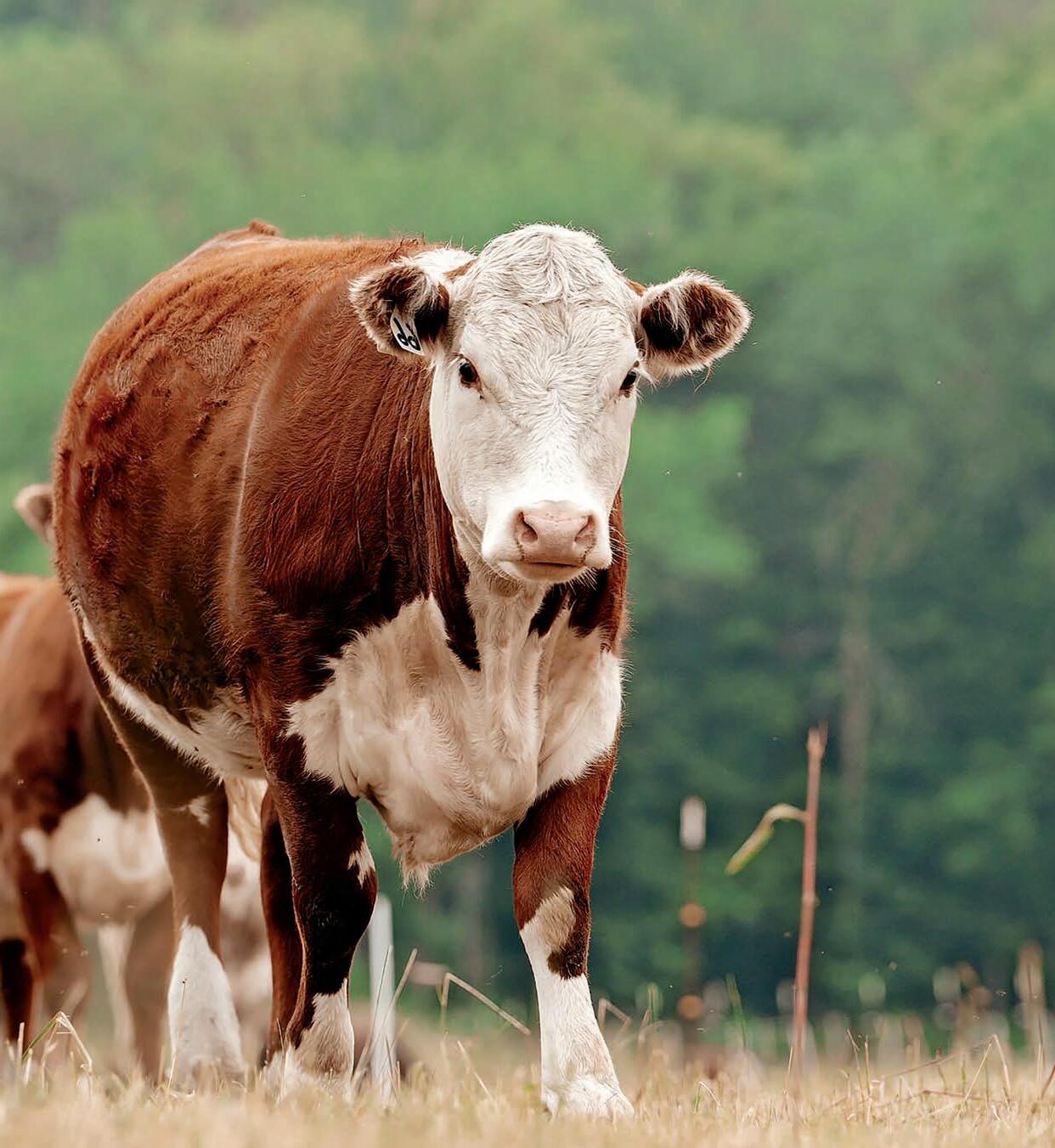
PRESENTED BY THE



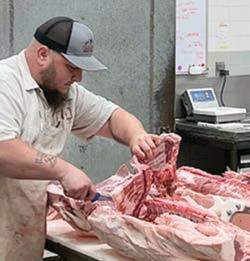
Meat Cutting
•Onlineclassesin 4-weekblocks
•In-person,hands-onlabsat locationsnear you
•Flexibility to take full, one-semesterprogramor individual courses
Ag Power& Equipment
•Willmarcampus
•Fallandspringstarts
•Hands-ontrainingatschool farm,labsandshops
•Internshipsforindustry experience

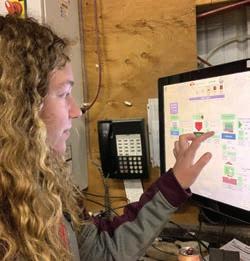
AgriBusiness
•Willmarcampus
•Fallandspringstarts
•AAS degreealso availableonline
•Fourpaidinternshipsfor hands-on experience
NewCertificates!
•AgricultureMarketing& Communications
•AgricultureAutomation
•Meat ProcessingCertificate

choices togain
confidenceinagriculture.
| HUTCHINSON | ONLINE An equalopportunity employer/educator
Newprogramsandonlineoptionsgiveyoumore
skill sand
WILLMAR
Tomorrow
Ag Excellence forTodayand
w A
ridgewater.edu/agriculture| 800-722-1151









Litchfield,MN55355 320.69 Steffes Group,Inc., 23579 MN Hwy 22S, Litchfield,MN55355 Stef fe sGroup.com | 320.69 3. 9371 SELLING LAND & EQUIPMENT THESTEFFES WAY. Since1960


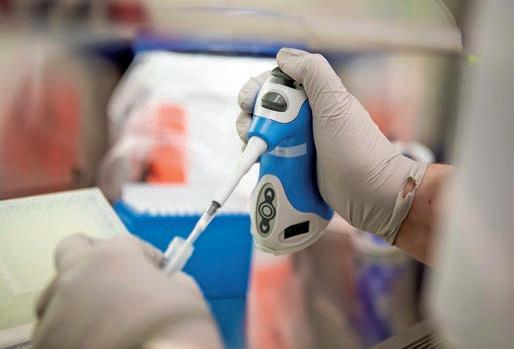
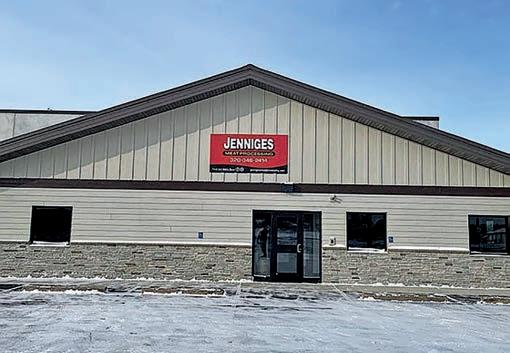

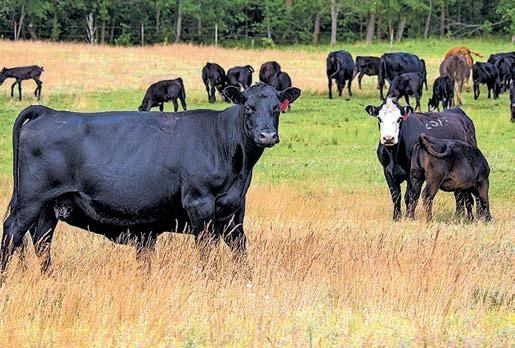
4 – West Central Tribune – March 2024 PUBLISHER: Steve Ammermann EDITOR: Kelly Boldan MAGAZINE EDITOR: Kit Grode AD MANAGER: Christie Steffel MAGAZINE DESIGNER: Jamie Holte WELCOME TO ROOTED IN LOCAL AGRICULTURE 2024 Biosecurity takes center stage in wake of avian flu outbreaks …...........................................................................................6 Brooten meat processor opens new facility, retail space .................................................................................................................9 Producers push back on use of ‘milk’ for plant-based beverages ..................................................................................... 11 Local honey production on the decline statewide .......................... 16 Rockdell Creamery still buying milk 135 years later ...................... 22 Crop-killing weeds continue to threaten U.S. farmland .............. 25 Cattle producers research cooperative approach to selling their beef............................................................................................. 28 Rockfilter Distillery uses Driftless resources to its advantage..........................................................................................................35 Table of Contents A publication of West Central Tribune, March 2024 2208 Trott Ave SW, Willmar MN | www.wctrib.com 320.235.1150 Content from West Central Tribune staff and Forum News Service. 6 16 9 28

f

BIOSECURITY TAKES CENTER STAGE
Livestock producers on high alert to counter spread of avian flu
 By Levi Jones | West Central Tribune
By Levi Jones | West Central Tribune
WILLMAR — For the past few years, every fall and winter has brought with it cases of Highly Pathogenic Avian Influenza.
The United States has been dealing with a longstanding outbreak of H5N1, commonly referred to as avian flu, since 2022.
In that time, more than 81 million birds have been infected, and Minnesota alone has seen more than 6.3 million birds affected, according to the Minnesota Board of Animal Health.
Whenever a case is discovered, experts recommend farmers review their biosecurity to ensure the safety of their animals, but what this looks like can vary greatly.
“Simply put, biosecurity is the steps we take to prevent or reduce the risk of disease transmission. That is a very broad definition and we can pare it down pretty concisely depending on a property, a farm location or a farm location,” said Abby Schuft, Extension educator for the University of Minnesota Extension.
During the COVID pandemic, these practices were widespread and practiced more often through things like wearing masks, social distancing and regularly washing hands.

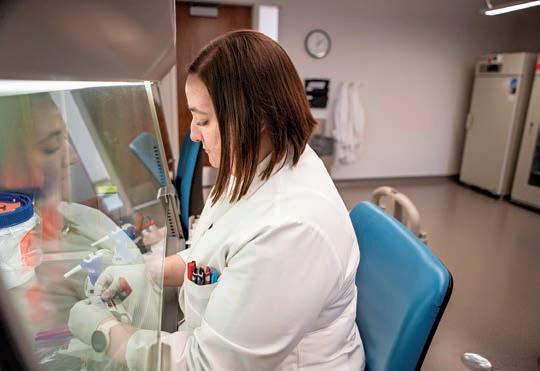
For farms, biosecurity measures taken depend on factors unique to each farm, including the surrounding environment, livestock and quantity of animals.
“Everything from checking exterior walls and ventilation systems so that even the smallest holes or washouts that could create an entry point for animals are closed is a biosecurity step. Understand the landscape where your animal is — and this goes for any animal. The environment around the farm will pose different scenarios,” Schuft said.
In Kandiyohi County, there are many farm fields. When these fields are harvested, a change is made in the environment for wild animals searching for food, which then changes the biosecurity measures needed for poultry farms.
Livestock producers can take better precautions for preventing the spread of disease by being aware of these changes.
The current outbreak of H5N1, which has been ongoing since 2022, is most commonly spread through wild waterfowl.
The U.S. Department of Agriculture has found 87% of cases come from wild birds. Test results from local farms are genetically sequenced by the USDA at the national laboratory to determine the source of the virus. The other
6 – West Central Tribune – March 2024
Macy Moore / West Central Tribune PCR Lab Technician Abby Hennen prepares to load a sample for RNA extraction at the Minnesota Poultry Testing Laboratory in Willmar on Wednesday, March 6, 2024.
Macy Moore / West Central Tribune
Extracted RNA sits on ice as it waits to be tested at the Minnesota Poultry Testing Laboratory in Willmar on Wednesday, March 6, 2024.
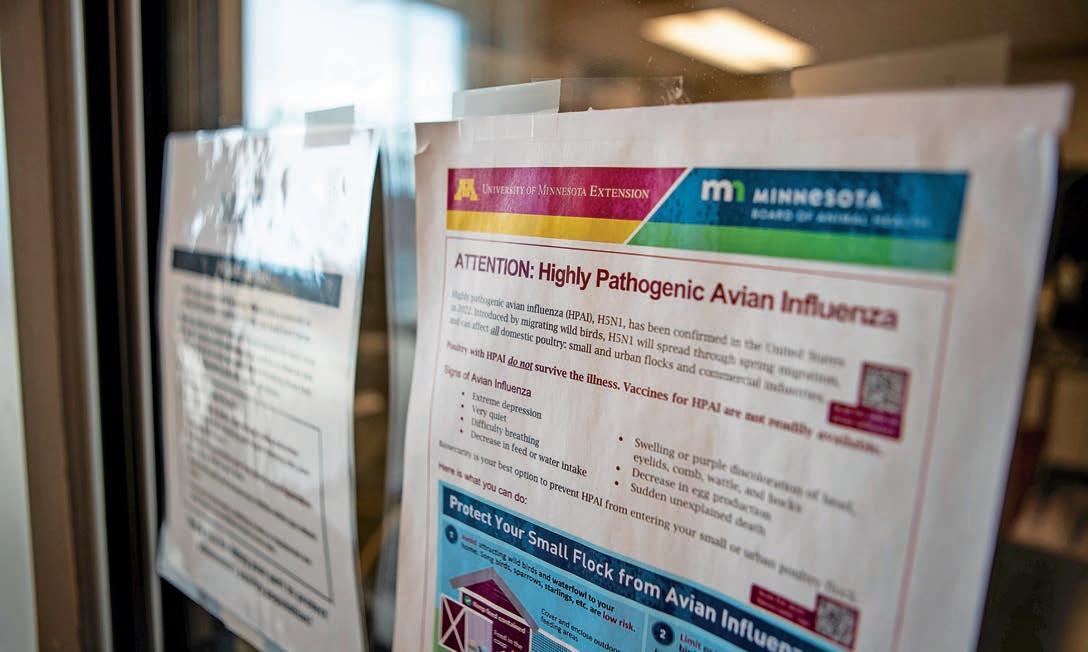
13% of cases likely come from people.
“We are doing that (spreading disease) on our bodies or on our equipment that we are using. It might be on a barn or on a different farm within an integrated system. There are pieces of equipment that may be shared going from one farm to the next,” Schuft said, “Maybe there was the smallest mistake that happened when washing. People are making mistakes, maybe not doing

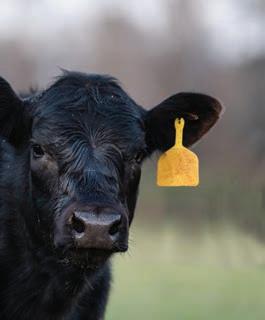



West Central Tribune – March 2024 – 7 Main Office 1025 E. Frontage Rd., Litchfield, MN 55355 | 320.693.2821 Atwater Location 16319 Hwy. 12 NE, Atwater, MN 56209 | 320.974.8868 Litchfield Location 511 Polydome Dr., Litchfield, MN 55355 | 320.693.6014 Quality Care For Large Animals Our experienced veterinary team provides comprehensive care for dairy cows, sheep, goats, beef cows, horses, pigs and more. Services: • Vaccinations • Surgery • Dehorning • Castrating • Exams • Pregnancy diagnosis Three locations to serve you: Willmar 320.235.7396 Granite Falls 320.564.1888 Montevideo 320-321-1142 www.South71Vet.com VETERINARY CLINIC & SUPPLIES South 71 • Hoof care • Herd health services • Onsite farm services • Emergency & on-call services 24 hours a day
Macy Moore / West Central Tribune
Signage warns those arriving at the Minnesota Poultry Testing Laboratory in Willmar about the restrictions in place to prevent contamination on Wednesday, March 6, 2024.
Macy Moore / West Central Tribune PCR Laboratory Technicians Mary Sietsema, at left, and Abby Hennen work at the Minnesota Poultry Testing Laboratory in Willmar on Wednesday, March 6, 2024.
a thorough enough cleaning and disinfection process. Maybe they are just running into the barn to check something and they aren’t doing the proper protocols.”
While avian flu isn’t the only disease prevented through proper biosecurity, it can be the most impactful. Some diseases have little impact on a flock, birds may be sluggish for a while but be fine in the end. H5N1, on the other hand, has a high mortality rate.
When a case of avian flu is believed to be found in a flock, a sample is taken to a local lab, like the University of Minnesota Extension lab in Willmar, to be tested. When cases are confirmed, the farm where it was found goes on lockdown and flocks are depopulated.
And the lockdown isn’t just for the birds. Residents of the farm are asked to reduce travel to and from the location as much as possible.
“The infected premises goes into lockdown. Nobody leaves. If you have to come on the premises,

you have to have a dang good reason why — or you are part of the depopulation and disposal crew that is coming on to eliminate those birds. Everything else shuts down. Mail isn’t being delivered, garbage isn’t being picked up and packages aren’t being delivered, things like that,” Schuft said.
To contain the infected site, the USDA puts a control area around the farm which extends out in a six-mile radius. Within this radius, farms are required to practice higher regulated biosecurity, and are regularly tested for the disease.
Increased regulations for neighboring farms include required vaccinations, regular testing and lockdown in the days leading up to shipping birds. People outside of the radius are not required to follow these procedures but may choose to take further precautions when a case is found.
“When there is a confirmed case, everybody else goes on alert. Because of our high-density


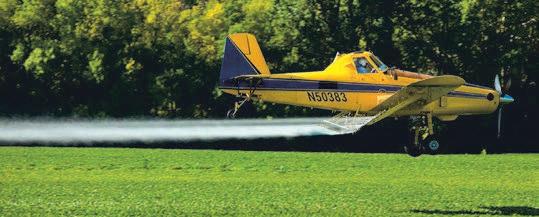
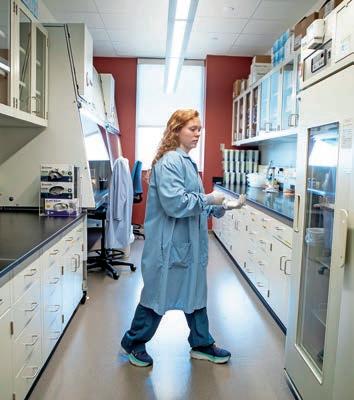
population here, it is very easily spread. Those farms that aren’t infected but are affected — meaning the neighbor has it — they have a lot of specific things they have to do and prove they are doing in order to continue their business,” Schuft said.
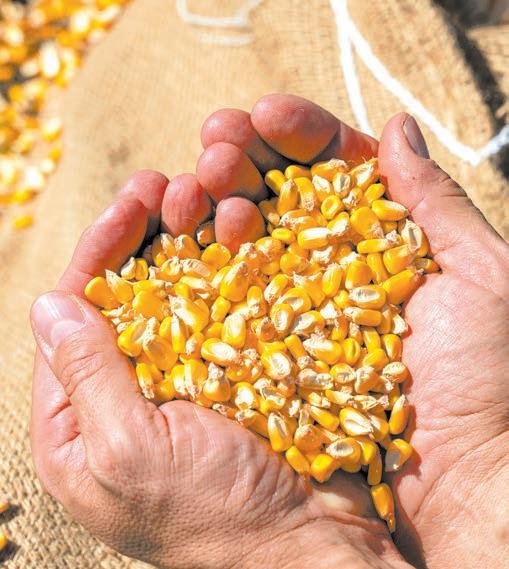

8 – West Central Tribune – March 2024 The Dryer Doctors can help with all your grain handling needs. 7039 Highway 7 SW, Montevideo, MN 56265 Business Hours: Monday - Friday: 8:00 - 5:00 thedryerdoctors.com thedryerdoctors@gmail.com • (320) 321-1600 Specializing in GSI & FFI Grain Dryers Willmar Aerial Spraying, Inc. Olivia Airport, Olivia, MN 56277 320-523-2186 Richard Sigurdson Your source for Quality Farm Equipment, Parts, and Service. We specialize in Sugar Beet Equipment, Spring Tillage, Sprayers, Fall Tillage, and Grain Handling. Stop by today & visit with our staff. We look forward to seeing you! 18 Division St. S • Clara City, MN 56222 • Tel: 320-847-3218 • Fax: 320-847-2680
http://www.wearda.com
Macy Moore / West Central Tribune Alannah Daugherty, who works as a PCR Laboratory Technician, puts on a pair of rubber gloves before before handling extracted RNA at the Minnesota Poultry Testing Laboratory in Willmar on Wednesday, March 6, 2024.

BROOTEN MEAT PROCESSOR OPENS NEW FACILITY, RETAIL SPACE
 By Trent Abrego | St. Cloud LIVE
By Trent Abrego | St. Cloud LIVE
BROOTEN — After moving into its new facility earlier this year, Jenniges Meat Processing has found different opportunities.
Nathan and Angela Jenniges are a husband-wife duo behind the business that opened a 12,000-square-foot facility on Jan. 17.
The new facility, on Highway 55, tripled the meat processing company’s capacity, includes a retail counter, added in-house slaughtering and is fully federally USDA inspected.
It came at a time when the business was expanding, Angela Jenniges said, adding the USDA licensure was a big driving factor.
That license allows farmers to sell their products directly from their freezer across state lines. With an








West Central Tribune – March 2024 – 9 Your First Against Soybean Sudden Death Syndrome HeadsUpST.com Create aLasting Legacy. Build Community. WACF@COMMUNITYGIVING.ORG 320-235-4380 www willmarareacommunityfoundation org Ourgoalis to empoweryou to leverage yourgifts andamplify yourimpact to make the community youlove abetterplace. Youcantrustthe Willmar Area Community Foundation to bein touchwiththe needsof your community. ”-WACFDONOR
Ihavetheopportunity to makeanundeniable impact to manyofmyfavoritecharitable causes. Itrustthe Foundation to putthe dollarsintherightplaces,knowing Iam making adifferencelocallyandin realtime.
Contributed / Jenniges Meat Processing
Jenniges Meat Processing opened its 12,000-square-foot facility in January. The new facility is at 10135 State Highway 55 in Brooten.
increase of people wanting to sell and market their products, the couple saw a need, she explained.
“There aren’t a lot of USDA facilities in Minnesota and most of them are at full capacity and not taking new clients,” Jenniges said in a phone call with St. Cloud LIVE. “So, anybody that’s trying to start up or trying to move into that side of the market, they’ve been really restricted as far as being able to get their animals processed.”
How it works
An on-site inspector with the USDA has to check the animals when they get unloaded off a trailer prior to the slaughtering process, Nathan Jenniges explained.
The inspection continues throughout the slaughtering process and later, during the application of labels.
With the new license, the meat processing company has widened its base with customers from Brainerd and as far west as Rapid City, he said.
“There is a lot more opportunity without kind of competing against the other small meat lockers around,” Nathan added.
At the old facility, Jenniges said the company had the butchering capacity of about 580 beef and 200 hogs per year. The new facility has a capacity of 30 beef and 30 hogs a week, totaling 1,500 each per year.
The processor is slowly ramping up, with an average of 18 cattle per week, still up from the previous location’s average of 12 or 13.
The company was formerly known as J & K Meat Processing and was where Nathan was employed during high school and college before eventually pursuing other ventures, he said.
However, the Belgrade-Brooten-Elrosa graduate returned in 2008, when he and Angela began working for the business. By 2012, the two owned the business. State grants provide some relief
While launching the new location, the company also got a few grants from the state’s Department of Agriculture.
One, a value added grant, assisted the business in purchasing some coolers and freezers for its retail area, Angela said.
The other, an AGRI Meat, Poultry, Egg and Milk Processing grant from the Minnesota Department of Agriculture assisted the business in covering 25% of all equipment put into the new facility, she said.
Improvements
During the construction process of the new facility, the couple designed the parking lot at the business to accommodate bigger vehicles, such as semis, campers or boats.
The new facility includes meats, along with dairy staples such as milk, cereal, pizzas, produce and more.
Jenniges Meat Processing also buys beef products from Minnesota-based companies to make sausage and other meat products for its retail space.


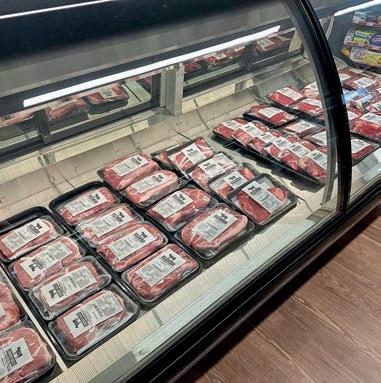
10 – West Central Tribune – March 2024
Contributed / Jenniges Meat Processing
Nathan and Angela Jenniges, owners of Jenniges Meat Processing, pose in front of a construction sign for its new facility in this undated photo.
Contributed / Jenniges Meat Processing
An inside look of the new Jenniges Meat Processing facility, which officially opened in January 2024.
Contributed / Jenniges Meat Processing Meat sits inside refrigerated units at the new Jenniges Meat Processing facility in Brooten. The building is at 10135 State Hwy 55.

THE BATTLE RAGES ON OVER THE USE OF ‘MILK’ ON PLANT-BASED BEVERAGES
 By Michael Johnson | Agweek | Special Report
By Michael Johnson | Agweek | Special Report
Beverages are displayed neatly side-by-side with each other in grocery stores across the country. And while a whole section may say milk, a good chunk of the inventory has no dairy inside.
That “milk” label on a growing variety of plant-based beverages has been on the minds of dairy advocates since the ‘70s as they fight the battle to regain ownership of the name, and with it, the market.
The United States Department of Agriculture claims that fluid milk, the kind that comes mainly from
cows, has seen steady decreases in consumption for generations, back to the 1940s, and that plant-based varieties have had some influence on that, but are not a major driver behind lower liquid milk intake. By comparison, sales of fluid milk in 2022 totaled about 40 billion pounds. Plant-based sales totaled about 361.5 million pounds, or 11% of fluid milk’s total.
Alan Bjerga is executive vice president for communications and industry relations for the National Milk Producers Federation. He points out




West Central Tribune – March 2024 – 11
Courtesy / Rebecca Drobis
A 100% Satisfaction Guaranteed A Up Front Pricing A 24/7 Emergency Service Available A Over 35 years of Experience A Financing Available! Call 320-634-3608 • Plumbing Repair & Installation Services • Home Heating & Air Conditioning Services • Drain Cleaning • Trenchless Sewer Replacements
Alan Bjerga, executive vice president of communications and industry relations for the National Milk Producers Federation.
in recent research that while liquid milk sales have been slipping, so have plant-based beverage sales — even more so than milk. It’s a matter of more options cycling through the marketplace than ever before.
“The fact is there’s just more proliferation,” Bjerga said.
ERS research using household scanner data from 2013-2017 confirms that sales of these plant-based beverages are negatively affecting purchases of fluid cow’s milk. Still, the increase in their sales is much smaller than the decrease in sales of fluid cow’s milk, so plant-based milk alternatives can explain only a small share of overall sales trends.
Fast-forward to 2024, and the plantbased beverage options, displayed as “milk” in the United States, have exploded. You won’t just find the longstanding soy, rice and almond varieties. The cooler sections make room for cashew, coconut, flaxseed, hazelnut, hemp seed, macadamia nut, oat, pea, peanut, pecan, quinoa and walnut-based beverages. While soy


On the outside, milk varieties may appear the same. But what’s on the inside can vary widely between plantand animal-derived versions.
has been in the market since about 1917, almond milk is now the leading plant-based alternative. While adding new plant-based beverages can involve adding different formulations of vitamins, sugar and flavorings to nuts, grains, seeds or legumes, dairy products are held to higher standards, Bjerga insists.
“If you took a whole tanker of milk and you added a glass of water to that tanker, by FDA rules, you wouldn’t be able to call it milk anymore because of that cup of water,” Bjerga said.
Bjerga feels it’s unfair that the two products can have such different formulations, yet still use the same “milk” label. On the shelf and in a glass, the two products look quite similar. Bjerga and many dairy advocates feel more needs to be done to differentiate between the two.
“Consumers are being misled about the nutritional content of these beverages because of the terminology that’s being used,” Bjerga said. In his role he communicates the importance of integrity in labeling on the industry, particularly the effect on dairy.
Dairy advocates say consumers should be able to trust that a label is telling them what’s inside that container. Bjerga said a fair amount of consumers are confused by the label to the point that they believe animal-derived and plant-based milk



12 – West Central Tribune – March 2024 dooleypetro.com|320.235.5200
PETROLEUM&NATURALGAS DIESEL-PROPANE-GASOLINE-DRYERDELIVERY
Polina Tankilevitch / Pexels
are providing similar nutritional benefits. Bjerga said that’s not the truth.
“Consumers have an expectation when they hear the word milk and they are not getting it from these imitators. And that’s good for no one,” Bjerga said.
Labels on food and beverage products give off a lot of cues to consumers. There are nutritional facts on the back of the product, but descriptions of important ingredients, names, logos and pictures that can all trigger a purchase are at the forefront. He said a consumer’s decision comes down to many things, but a fundamental part of the decision is the name on the product.
The National Milk Producers Federation takes a position on the subject that seeks to “stop the continued proliferation and marketing of mislabeled non-dairy substitutes for
Source: USDA, Economic Research Service using data from IRI’s 2013-17 National Consumer Panel.
/ USDA This graphic shows fluid milk and plant-based beverage consumption from 2013-2017.


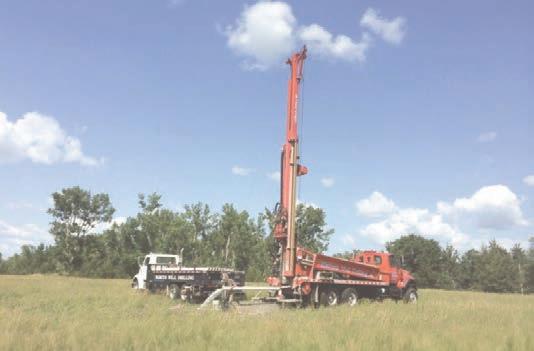






West Central Tribune – March 2024 – 13 85 YEARS CELEBRATING SINCE 1938 OF SERVICE Marcus Well Drilling, Inc. •Well Drilling • Well Sealing • Pump Repair •Water Lines • Constant Pressure Systems 320-329-3319 320-329-3562 320-894-4422 Farm and Residential Since 1962-Renville, MN Marcus Well Drilling, Inc. •Well Drilling • Well Sealing • Pump Repair •Water Lines • Constant Pressure Systems 320-329-3319 320-329-3562 320-894-4422 Farm and Residential Since 1962-Renville, MN ofthe Comeshopover20 flavorsofcheeseand otherlocallymade products! fieldgatecheese.com WE’REBACK ! Newlook,samegreattaste 25 WDepot Street Litchfield,MN Visitusonlineto learnmore!
2013 2014 2015 2016 2017 0 0.1 0.2 0.3 0.4 0.5 0.409 0.028 0.375 0.034 0.372 0.036 0.368 0.035 0.359 0.038
Courtesy
Gallons per household per week U.S. households are buying less fluid cow’s milk and more plant-based products Fluid cow’s milk Plant-based products
standardized dairy foods misrepresented as “milk,” “cheese,” “butter,” “yogurt,” “ice cream,” or other dairy foods.”
It’s an issue brought before the U.S. Food and Drug Administration, which defines milk as the product of an animal. Despite that being their definition, they do not restrict the use of the word “milk” when used on plantbased beverages.
The FDA performed a study of consumers in 2018 and three-quarters indicated they understood that plantbased milk products did not contain milk; less than 10% believed they did contain milk; and the remainder did not know. The focus group responses indicated that most people understood that plant-based milk was not animal-derived milk. It also showed that the respondents were familiar with the word milk with these products and preferred that name over other terms, such as “beverage” or “drink.”
Many consumers experience allergies to cow’s milk. Large populations are lactose intolerant. Some don’t want to consume an animal product. Consumers have a right to buy and consume whichever beverage works best for them.
But the integrity side of this is that the role of the FDA is to help inform consumers about the products they consume and to help them make a healthy choice, Bjerga argues.
“The current lack of enforcement of FDA’s standard of identity actually discourages that outcome,” Bjerga said. “And that’s why we’re fighting for the integrity of milk labeling because it encourages that.”
Bjerga said some of these beverage companies do a “frighteningly good” job marketing their product to make it look like it provides more nutritional value than liquid milk. Some do offer the nutrients consumers are looking for.
“We’ve also seen survey data showing clear majority of consumers believing that almond beverages have more protein than milk from a cow, when in fact it will often be one quarter or one eighth the amount of protein,” Bjerga said.


“We’ve also seen survey data showing clear majority of consumers believing that almond beverages have more protein than milk from a cow, when in fact it will often be one quarter or one eighth the amount of protein.
— Alan Bjerga
FDA guidance
“In draft guidance from the Food and Drug Administration in February 2023, it was recommended that labeling should give consumers “the information they need to make informed nutrition and purchasing decisions on the products they buy for themselves and their families,” according to FDA Commissioner Robert Califf, in a release of the draft.
In their guidance they note that clarity is important because these plant-based beverages do not, in many cases, contain the nutritional value of liquid milk. The Dietary Guidelines only include fortified soy beverages in the dairy group because their nutrient composition is similar to that of milk, the guidance states.
Within the guidance, it recommends that a plant-based milk alternative product that includes the term “milk” in its name (e.g., “soy milk” or “almond milk”), and that has a nutrient composition that is different than milk include a voluntary nutrient statement that conveys how the product compares with milk based on the USDA’s Food and Nutrition Service fluid milk substitutes nutrient criteria.
Some companies have added language to that effect.
This draft guidance remains the FDA’s current view on the subject.
“As you know, in February 2023, the FDA issued draft guidance, Labeling of Plant-Based Milk Alternatives and Voluntary Nutrient Statements, that provides our current view on the naming of plant-based foods that are marketed and sold as alternatives for milk,” an FDA spokesperson shared in an email response. “The guidance also includes our recommendations on the use of voluntary nutrient statements that would provide consumers with additional information to help them understand certain nutritional differences between these products and milk. We received approximately 1,600 comments from a range of stakeholders with many different viewpoints on various aspects of the proposal. The FDA is currently reviewing comments from the draft guidance and will work to finalize the guidance in the coming year.”
With the “milk” label still in use Bjerga said the dairy industry continues to push for the Dairy Pride Act, asking Congress to mandate that FDA deal with the “milk” label issue.
14 – West Central Tribune – March 2024 Water Conditioners • drinking water systems • salt delivery • bottled water LOCALLY OWNED & OPERATED BY: JOHANNECK WATER CONDITIONING, INC. 101 LITCHFIELD AVE SE, WILLMAR (320) 235-8040 ECOWATERNOW.COM No more rusty, stinky water. Your livestock will love us, too! FREE CONSULTATIONS
Lactose-free surge
Plant-based beverages are an option that many lactose-intolerant consumers purchase because they still want to enjoy a milk-like beverage even though their body tells them to avoid lactose. But one label that Bjerga is excited about is the “lactose-free” label appearing on more animal-derived milk products. It’s an area of liquid milk that is actually seeing significant growth in recent years as more consumers reach for the milk they enjoy, without the issues caused by lactose, which hits a large portion of the population.
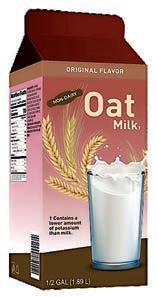
“Lactose-free retail volume in 2023 was 239.2 million gallons,” Bjerga
said. That’s up 6.7% from 2022. The lactose-free milk market makes up about 7% of the liquid milk market and it’s nutritionally identical, he adds.
Nutritional value
Dairy products offer nutritional value with protein and sources of vitamin A, D and B-12, as well as riboflavin, phosphorus, magnesium, potassium, zinc, and calcium, according to the USDA’s Economic Research Service. Plant-based milk can offer many of these as well, as the drinks are often fortified with vitamins.
The FDA says that consumers should read the nutritional guidelines to determine if the milk alternatives are providing the nutritional benefits that they want or need.
“The nutrients you get from plantbased milk alternatives can depend on which plant source is used, the processing methods, and added ingredients, so check the label carefully,” said Susan Mayne, Ph.D., Director of the Center for Food Safety and Applied Nutrition at the U.S. Food

and Drug Administration in an FDA news release.
Bjerga feels that it’s still achievable to have the “milk” label issue resolved. In the meantime, Bjerga said the dairy industry is being proactive about another concerning label discussion — lab-based synthetic alternatives. Companies are now synthesizing a single dairy protein to make synthetic milk.
“We’re working hard to make sure they don’t get the sort of toehold that the plant-based folks got,” Bjerga said.

West Central Tribune – March 2024 – 15
Michael Johnson / Agweek Planet Oat Oatmilk includes a disclaimer on the front of their drink that the product is “not nutritionally equivalent to dairy milk” and that the product is crafted to blend and whiten like dairy milk.
Courtesy / FDA An example from the Food and Drug Administration shows a voluntary label that plant-based beverages could place on their beverages. It includes language showing it provides different nutrients than milk and that it is not actually dairy.

LOCAL HONEY PRODUCTION ON THE DECLINE
Minnesota apiaries facing lack of habitat for their busy pollinator livestock
 By Levi Jones | West Central Tribune
By Levi Jones | West Central Tribune
WEST CENTRAL MINNESOTA — When many think about farming in Minnesota, they may think of crops like corn and soybeans, or perhaps the various livestock raised across the state. However, one agricultural industry is often overlooked — beekeeping.
Minnesota has been home to beekeepers for generations. Apiaries have helped to provide Minnesotans with local honey, among other products, as honey is far from the only thing these busy bees provide.
Everything from skincare to candles
Shelly and Steven Scott are owners of Little House on the Homestead, an Alexandria-based company which creates all sorts of products using honey and other natural ingredients. The company was founded when the Scotts’ son Sawyer developed eczema, for which they needed nontoxic skincare products.
“We started making soap like my grandmother and found great success from it. All of this started with a struggle, and we want to be there to help people who are facing the same challenges,” Shelly Scott said.
Among the products sold by Little House on the Homestead is an oatmeal milk and honey soap designed to utilize natural ingredients to provide exfoliating skincare.
“It is not just limited to artisan soaps; we also sell raw honey sticks and beeswax candles. It is just a wonderful ingredient, you can use it as an exfoliator, take it internally or use it as skincare,” Scott said. “I always challenge people to use honey because it is a great one to add in addition to other parts of a routine. You don’t need all the products with toxic ingredients when honey will exfoliate gently.”
Little House on the Homestead gets its honey from local sources, and is planning to start keeping their own bees in the near future; however, for many in the industry, Minnesota isn’t what it used to be.
Disappearing habitat impacts industry
The beekeeping industry peaked in Minnesota in the 1960s, according to Ames Farm owner Brian Fredrickson, who started his Delano business in 1994. Since then, natural habitats for bees and other pollinators have
disappeared rapidly, leaving parts of Minnesota with a severe lack.
“I was born 1960; I remember how many different butterflies and native pollinators we had,” Fredrickson said. “Anyone in their 20s or younger would have no memory of the pollinators we used to have. Most pollinators are gone because the habitat is gone. Another legislative session has changed nothing. We need local landowners to plant things for the pollinators.”
According to Fredrickson, one of the best things that people can do is use their land to plant native wildflowers, basswood and other prairie plants to help re-establish habitats for pollinators.
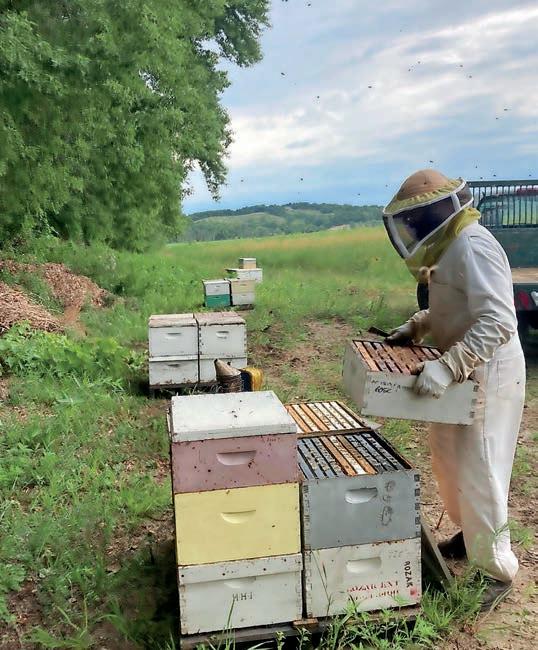
16 – West Central Tribune – March 2024
Contributed / Ames Farm
Brian Fredrickson, of Ames Farm near Delano, stacks hives.








320-354-5494 • newlondonre@gmail.com www.newlondonrealestateinc.com
“We have 50 million acres of land in this state. Eighteen million of those acres were native prairie land. Nowadays, we have 200,000 acres left,” Fredrickson said. “These stats are boring to some people, but they tell the story. We have only 1% of our original prairie land.”
Large-scale beekeepers in Minnesota have to take their bees out of state — typically to Texas or California — for the winter months, but with increasingly difficult conditions for both native and agricultural pollinators, some are leaving the state for good.
“It is a dying industry. The number of large beekeepers has gone down significantly,” Fredrickson said. “There are no policies in place that would change this. We don’t really have any program in the state to change the course of the loss of habitat for pollinators. That is one of the biggest problems we are facing.”
The area around Willmar is no exception, according to Fredrickson. Some beekeepers even refer to it as the pollinator death zone due to the severe lack of habitat for natural pollinators.
“Willmar down to Glencoe or Winthrop could be considered ground zero. It is impressive to see the complete industrialized farming. If it isn’t cropland, it is mowed off grass with nothing,” he said. “Everyone has a right to make a living, I don’t want to blame farmers, but they do hold the key to leaving some land for the pollinators.”
With worsening conditions and

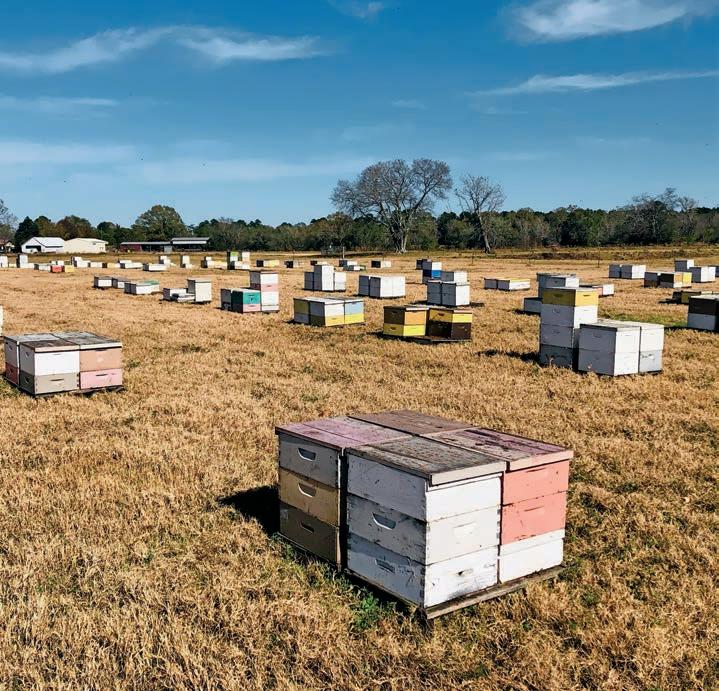
fewer large-scale apiaries remaining in the state, getting local honey has been increasingly difficult for residents.
According to Fredrickson, more than 80% of the honey consumed in the U.S. is imported from other countries.
“Nowadays, local honey that is raw is harder to find than a bag of weed in Minnesota,” Fredrickson said.

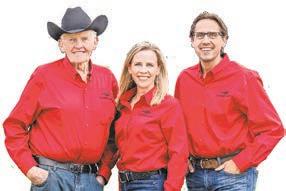
Efforts are being made to restore prairie land and help pollinators, and everyone is encouraged to help. Organizations and companies like Prairie Restoration sell native prairie flowers. Landowners can plant clover, leave portions of land untouched and not over-mow to help bring back pollinators, and help make local honey a more common find.








18 – West Central Tribune – March 2024 YO UC RE AT ET HECOZY. WE’LLPROVIDETHE WA RMTH. When you spend a lot of time in your home, you want to take steps to make it healthier. That's why we offer a range of innovative products to help improve indoor air quality. Like the Infinity air purifier with an advanced filter that can capture and kill select viruses and bacteria. Contact Chappell Central to learn more. 320-281-1647 1950 Trott Ave SW, Willmar 56201 www.chappellcentral.com Farmland Professionals Since 1978 For More Information go to: www.FladeboeLand.com Our Family Serving Families for Over 45 Years! For more information call Kristine: 320-212-9379 Glen: 651-208-3262 Dale: 320-894-9392 Services We Offer: • Auctions • Private Sale Negotiations • Listings • Appraisals • Complimentary Consultations
Contributed / Ames Farm Hives sit in fields at Ames Farm near Delano. A lack of habitat has led to a disappearing pollinator population, according to owner Brian Fredrickson.










West Central Tribune – March 2024 – 19 YOUR ONE-STOP-SHOP MEDIA COMPANY We are a 5th generation family-owned company, that strives on bringing news to our communities and bringing up-to-date effective advertising campaigns to small, medium, and large businesses. We invest in our sales, our products, and our employees by providing top-notch training and helping our community businesses with the best advertising solutions for all budgets. Our Services Print/Digital Ad Creation Video Creation & Production Website Creation & Management Content Creation & Production Social Media Creation & Management Christie Steffel t: 320.214.4317 e: csteffel@wctrib.com Christine Riemersma t: 320.214.4310 e: criemersma@wctrib.com Hannah Dahl t: 320.214.4375 e: hdahl@wctrib.com Madison Mickels t: 320.214.4328 e: mmickels@wctrib.com Colton Iverson t: 320.214.4315 e: civerson@wctrib.com Contact the West Central Tribune’s Sales Team for more information. Contact us today sales@wctrib.com 110 Atlantic Avenue West PO Box 8, Grove City, MN 56243-0008 Telephone: 320-857-2521 | Fax: 320-857-2577 info@grovebancorp.com
/ Shelly Scott Little House
the Homestead’s oatmeal milk and honey soap is designed to be a gentle exfoliator.
/
Contributed
on
Contributed
Shelly Scott
Shelly and Steven Scott, owners of Little House on the Homestead, began making honey-based products when their son needed specialized skincare products to treat his eczema.








EXPERIENCE THE NEW BUICK OPEN: Monday-Thursday 7:30-6; Friday 7:30-5:30; Saturday 8-4 1005 N. SIBLEY LITCHFIELD, MN DavisMotorsGM.com 320-693-3224 or 877-693-3224 DAVIS MOTORS Home of the Lifetime Warranty





BABCOCK BLVD. EAST DELANO, MN DavisMotorsportsDelano.com 763-972-5045 Field Tested. Farmer Approved.

ROCK DELL CREAMERY STILL BUYING MILK 135 YEARS LATER
 By Noah Fish | Agweek
By Noah Fish | Agweek
BYRON, Minn. — Rock Dell Creamery celebrates its 135th anniversary this year, but co-manager Phil Suess said there’s not going to be a party like they had for its 100th year.
Times are different today, and the creamery that was buying milk from producers across five counties in 1889 is now only buying milk from a single farm.
Suess, a dairy farmer for more than 65 years, has served as co-manager of Rock Dell Creamery for nine years. Diane Severson manages the store with Suess, and handles the financial work.
“Supposedly we’re the oldest operating co-op left in the state of Minnesota,” Suess said on a recent Friday inside of his office in the store. “A lot of the small creameries,


22 – West Central Tribune – March 2024
Noah Fish / Agweek
A pile of milk receipts at Rock Dell Cooperative Creamery on Dec. 29, 2023.
Noah Fish / Agweek
Rock Dell Cooperative Creamery on Dec. 29, 2023.
financially, couldn’t continue to keep going, but we’ve been very lucky with that.”
The creamery is still owned by the patrons who sell milk or who have equity in the business. Suess said there are about 50-60 individuals left that have equity in the business but only one farm with a share.
“That keeps us as a co-op,” Suess said of the one farm still selling milk to the creamery, which is Hart Farm located just miles down the road from the creamery. “Twenty-five cows — so just a small operation.”
Suess said the last five to six years have been the worst for dairy producers because of the capacity at creameries.
“The processing plants haven’t kept up with the production, so we’re fighting for spaces for milk,” he said.
Suess said the dairy industry is changing.
“The big co-ops are phasing the small dairies out — they don’t want us,” he said.
Co-ops would rather pull into a large dairy with a semi and take a whole load of milk in 20 minutes than stop at 10 or 15 smaller farmers to get a load, Suess said. He doesn’t blame co-ops for consolidating, either.
“You either consolidate or go by the wayside,” he said.
Loyal customers
But Suess said that milk isn’t how Rock Dell Creamery is making money today, and if they were to stop getting milk from Hart Farm, they would continue to operate as a co-op, selling feed and other products.
“We have a very good feed business, and a very good small line pet feed and different things like that, that we sell that helps keep the money going,” Suess said. “We’ve got cheese and ice cream, and butters and candy bars and pop — and all kinds of stuff. Like a little convenience store out in the middle of nowhere.”
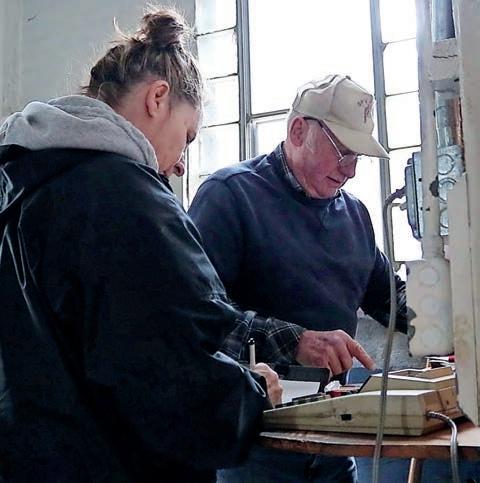
The creamery hours are Monday, Wednesday and Friday from 10 a.m. to 3 p.m. and Saturday mornings from 9 a.m. to noon.
“We’re going to stay open as long as we
MORE OPTIONS.







West Central Tribune – March 2024 – 23
AUTHORIZEDBOBCATD EALER DASSEL •LONGPRAIRIE ST.CLOUD •WILLMAR FarmRiteEquip.com EQ UI PM EN TI NC MORE PERFORMANCE.
on
29, 2023.
Noah Fish / Agweek Phil Suess helps Beth Davis at Rock Dell Cooperative Creamery
Dec.

“can,” Suess said. “We don’t see an end in sight at this time, because we’re very strong financially.”
He said on an average week, the store has around 35-40 people come in to buy products. Suess said they have a loyal customer base for a few reasons, including location.
“Location is very good for our customers, plus the fact that even though we can’t compete with the prices of

We get the good ole Bongards cheese and pick up our chicken feed. You can’t beat local.
— Beth Davis
“Fleet Farms, everybody in the area wants to keep these local small places alive and open,” Suess said.
Beth Davis, who lives on a hobby farm with her family a few miles away from Rock Dell Creamery, stopped in on a recent Friday to pick up the family’s usuals.
“We get the good ole Bongards cheese and pick up our chicken feed,” Davis said. “You can’t beat local.”
She said her family has been coming to the store for over 30 years.
“My grandkids — so the third generation of my family is coming here now,” she said.
Some customers come for the conversation, and the longest ones happen on Saturday mornings.
“A lot of guys will come in and we’ll sit in a chair and we’ll talk for half an hour,” Suess said. “Saturday morning is our coffee time, and I’ll have probably anywhere from five to nine farmers come in and sit here for the morning and drink coffee and solve the American problems for the week.”
In July of last year, Dave Distad, longtime manager of Rock Dell Creamery, passed away.
“Dave was here for almost 50 years — he managed his place forever,” Suess said. “A good manager keeps a good place open, and he wasn’t tough, just one of the nicest guys you’d ever wanted to meet.”
Nostalgia
The top half of the creamery building is filled with remnants of a different time.
“The upstairs in this building is clear-full of nostalgia,” Suess said.
Walking through the piles of stuff, Suess points out old separators, motors and the butter wagons they used at one time. There’s even the original safe from the early 1900s. They still use the original cash register, Suess said.
“And we don’t take credit cards or bank cards,” he said. “It’s cash or check.”
24 – West Central Tribune – March 2024
Noah Fish / Agweek
The original cash register at Rock Dell Cooperative Creamery on Dec. 29, 2023.

CROP-KILLING WEEDS ADVANCE ACROSS US FARMLAND AS CHEMICALS LOSE EFFECTIVENESS
 By Rod Nickel and Tom Polansek | Reuters
By Rod Nickel and Tom Polansek | Reuters
CHICAGO — Crop-killing weeds such as kochia are advancing across the U.S. northern plains and Midwest, the latest sign that weeds are developing resistance to chemicals faster than companies including Bayer and Corteva can develop new ones to fight them.
In many cases, weeds are developing resistance against multiple herbicides, scientists said.
Reuters interviewed two dozen farmers, scientists, weed specialists and company executives and reviewed eight recent academic papers which described how kochia, waterhemp, giant ragweed and other weeds are squeezing out crops in North Dakota, Iowa, Wisconsin and Minnesota as chemicals lose their effectiveness.
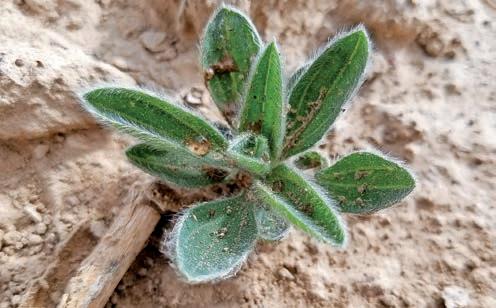

West Central Tribune – March 2024 – 25
Clarke Alder/ Amalgamated Sugar Company / Reuters Kochia is seen in a sugar beet field near Nampa, Idaho, in May of 2018.

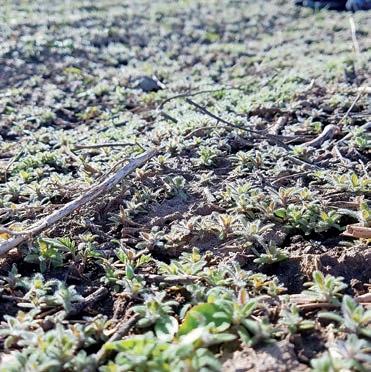

Over the last two decades, chemical companies have reduced the share of revenue devoted to research and development spending and are introducing fewer products, according to AgbioInvestor, a UK-based firm that analyzes the crop protection sector.
Farmers say their losing battle with weeds threatens grain and oilseed harvests at a time when growers are grappling with inflation and extreme weather linked to climate change.
“We’re in for big problems over the next 10 years for sure,” said Ian Heap, director of the International Survey of Herbicide Resistant Weeds, a group of scientists in over 80 countries that maintains a global database. “We are in for a real shake-up.”
The database records reduced effectiveness for glyphosate, one of the most common herbicides, against 361 weed species affecting corn, soy, sugar beets and other crops.
Some 21 weed species globally showed resistance to dicamba, the most recent major U.S. chemical, which launched in 2017.
Environmental groups argue that farmers should embrace natural weed-control methods instead of chemicals.
Kochia, which spreads as many as 30,000 seeds per plant, can cut yields by up to 70% if left unchecked, according to Take Action, a farmer resource program of the United Soybean Board.
Other factors, including the development of more robust seeds, have pushed overall global
crop yields higher. But scientists expect weed problems to worsen, with some weeds showing resistance to chemicals even on first exposure.
‘Really scary’
In Douglas, North Dakota, farmer Bob Finken sprayed dicamba and glyphosate to kill late-season weeds. Neither product eliminated kochia.
“That was really scary,” said Finken, 64. “Each year seems to get a little worse.”
Finken was forced to clear the weeds with harvesting equipment, which risks clogging expensive machinery.
Other farmers are hiring workers to pull weeds by hand, said Sarah Lovas, an agronomist with GK Technology, a precision agriculture firm.
North Dakota was the largest spring wheatproducing state in 2023 and ninth-biggest soybean grower.
Five of North Dakota’s 53 counties have confirmed populations of dicamba-resistant kochia, a year after it was first reported in the state, North Dakota State University weed specialist Joe Ikley said.
“It’s just a matter of time before it hits your farm,” said Monte Peterson, 65, who grows soybeans near Valley City, North Dakota. Lab scale-back
Chemical producers Bayer, Corteva and FMC say longer development and regulatory processes have constrained new products to combat weed resistance. Industry executives say regulators have become more stringent about environmental and health impacts.
The U.S. Environmental Protection Agency (EPA) said standards for approving new herbicides have not substantially changed since 1996. However, the EPA said recent efforts to assess the impact of new active ingredients on threatened plants and wildlife have delayed some decisions.
The EPA did not estimate the increased processing time. The agency said it expedites reviews of lower-risk products.
Farm chemical companies spent 6.2% of sales revenue on development of new active ingredients in 2020, down from 8.9% in 2000, AgbioInvestor said. Its data showed the introduction of new active ingredients fell by more than half in 2022 from 2000.
Instead, companies have expanded uses of existing products like dicamba, glufosinate and 2,4-D.
FMC plans the 2026 launch of an herbicide to kill grassy weeds in rice crops based on the
26 – West Central Tribune – March 2024
Clarke Alder/ Amalgamated Sugar Company / Reuters Kochia is seen along a roadside adjacent to a sugar beet field in Fruitland, Idaho in June 2020.
MIDDLE PHOTO: Clarke Alder/ Amalgamated Sugar Company / Reuters The weed kochia is seen in a field in Nyssa, Oregon in March of 2017.
BOTTOM PHOTO: Clarke Alder/ Amalgamated Sugar Company / Reuters Kochia is seen in a field in Nyssa, Oregon, in August 2017.
industry’s first new mode of action, a term for the way a chemical kills a weed, in three decades.
The herbicide was in development for 11 years. FMC hopes it will generate $400 million in sales within a decade, a fraction of the roughly $8 billion global glyphosate market.
“If we don’t keep developing the new products, we are going to run into a wall where growers don’t have the tools to combat the pests,” CEO Mark Douglas said. “And then ultimately you face food security issues.”
The world’s biggest agriculture chemical and seed company, Germany’s Bayer, hopes to produce its first new mode of action herbicide in over 30 years by 2028.
“We’re really desperate for (new modes of action) if we’re going to sustain uses for farmers,” said Bob Reiter, head of research and development for Bayer’s crop science division.
Two decades ago, companies commercialized a product for every
50,000 candidates, but it now takes 100,000 to 150,000 attempts, Reiter said.
U.S.-based Corteva said it has incorporated sustainability criteria, such as reduced groundwater risk, in its research and development, aiming to clear the path with regulators.
It hopes that approach will shorten the regulatory process when it introduces a fungicide with a new mode of action against Asian soybean rust disease in Brazil around 2027, said Ramnath Subramanian, vice-president of crop protection research and development. He did not say how much shorter the process may be.
Bill Freese, scientific director of the Center for Food Safety in Washington, said farmers should shift away from crops genetically engineered to tolerate herbicides, which lead to plants becoming resistant to multiple chemicals through repeated sprayings.
“It’s like this toxic spiral,” Freese said. “There’s no end in sight.”
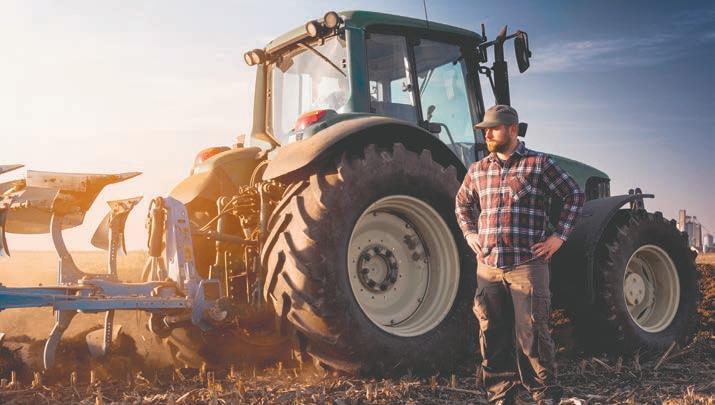





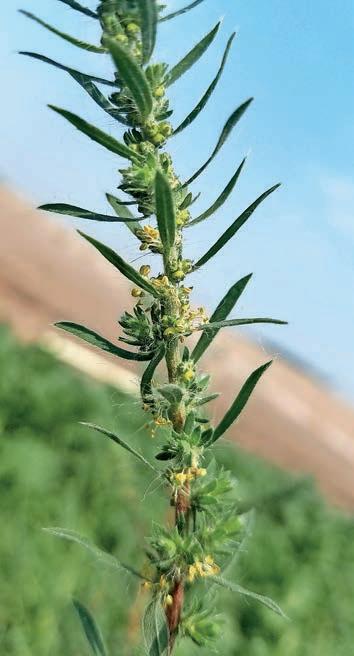



West Central Tribune – March 2024 – 27 co-opcreditunion.com Canby Office 1003 St Olaf Ave N Canby MN 56220 507.223.5737 Benson Office 1501 Minnesota Avenue Benson, Minnesota 56215 320.843.4210 Willmar Office 501 19th Avenue SE Willmar, Minnesota 56201 320.235.1573 Montevideo Office 2407 E Highway 7 Montevideo MN 56265 320.269.2117 Dan LorenTysonCarie Carol From Seed to Harvest, We’re Here For You! Stop in and see one of our Ag Lenders Today Clarke Alder/ Amalgamated Sugar Company / Reuters Kochia is seen in a sugar beet field in Parma, Idaho, in August of 2017.
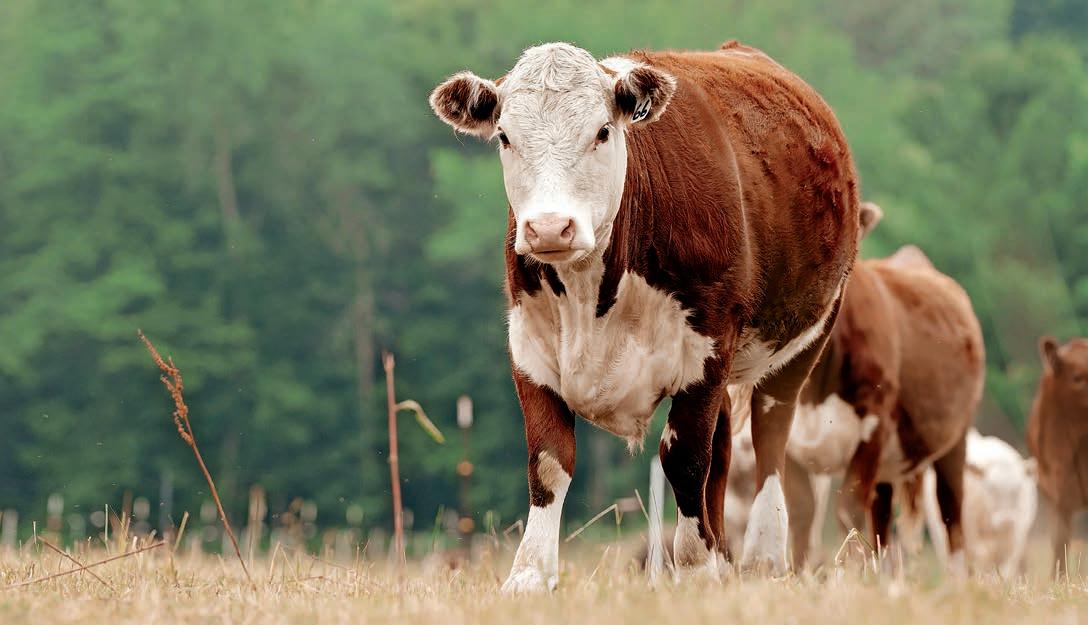

CATTLE PRODUCERS RESEARCH COOPERATIVE APPROACH OF SELLING THEIR BEEF
 By Michael Johnson | Agweek
By Michael Johnson | Agweek
PINE RIVER, Minn. — Beef producers in north central Minnesota have a simple dream. They want local consumers to get a taste for and regularly consume their locally produced meat. They want to turn their culled beef cows into ground beef and market it to consumers looking for a grass-fed burger from a small group of producers.
It seems easy enough. Market a local product direct to a local consumer. In fact, consumers say they want it. But this is an idea that’s been floating around for over a decade for some area producers who are hoping to create a cooperative, known as Headwaters Beef Cooperative, to market their brand of beef. It’s easier said than done.
The hook is being able to sell their processed meat at a price that is competitive with the nationwide or
worldwide meat companies while figuring out how they would operate all the moving pieces under a producerowned cooperative.
The group received a boost in their efforts when they were chosen to receive a $25,000 Cooperatives for Climate grant from Minnesota Farmers Union. They’ve been using the funds to dig into the finer details of potential costs associated with starting a cooperative and taking a closer look at the market desire for their beef. Early numbers are very preliminary, and producers are hungry for more detailed data before they’re willing to jump in and potentially hire staff to help run it.
Ariel Kagan is Climate and Working Lands Program Director for Farmers Union and said this is the type of project they could get behind because it is a group aimed
28 – West Central Tribune – March 2024
Brooke Bobendrier / Grand Vale Creative LLC
If producers start a cooperative to market their beef they hope consumers will support them by purchasing the local beef.


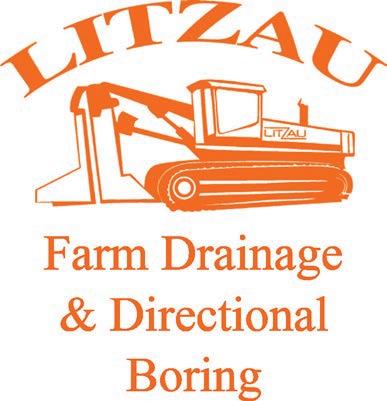
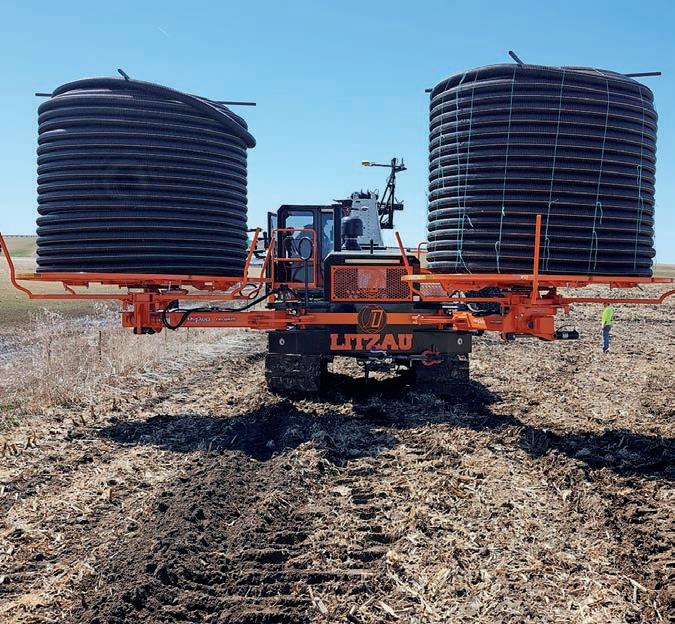
320-905-8645 • 320-894-3374 14101 60th Ave. SE Atwater, MN 56209 • Since 1972 • Water management • 3”–24” boots • Tiling fields • Roads & parking lots • Plowing hdpe pipe • Lagoons • Repair crew • Geothermal • Waterline • Electric line • Boring roads • Boring hdpe pipe • On grade specializing • Bore from 4” & up for making us #1 five years in a row! Best equipment to do the best job!Anywhere you don’t want to dig! Thank You! Farm DrainageDirectional Boring Celebrating 51 Years of Business!


at “providing stable prices to farmers and ranchers, and a healthy affordable protein to consumers, while protecting water quality, improving wildlife habitat and addressing climate change adaptation and mitigation.”
These ranchers’ location among the lakes and forests of what some consider “vacationland” means they have been living with and hearing from lakeshore property owners for decades about the impact of farming on water quality.
Kagan said cooperatives have been finding ways to solve difficult situations facing individual farmers for a long time.
“As we’re facing climate crisis, and all the challenges that that’s bringing, cooperatives again can be a key strategy for farmers to maintain their markets and build their markets,” Kagan said.
Farmers Union funded four such projects, all addressing climate from different approaches. Kagan said this one stood out because it uses livestock to look at climate resilience.
“We’re just really excited to see what farmers can do cooperatively to think about solutions to the climate change
problems that we’re seeing,” Kagan said. This was the first round of this grant, and a second is going to open in early 2024.
Jim Chamberlin is a conservation technician with Happy Dancing Turtle in Pine River and works with the Soil and Water Conservation District in Crow Wing County. This is an area that booms with lake visitors and lake shore property owners during the summer months. Many of these property owners are highly concerned about maintaining water quality here.
He said those concerned about the impact of farming on water should appreciate the methods of grazing that these ranchers use to maintain soil and water health. And he believes they’ll show that appreciation by buying beef that they know is raised in that regenerative manner.
“This idea that farmers would like a stable price for culled cows came up. I think it fits well with … our desire to look at farming operations that protect water quality. You know, most of the guys I know up here are doing a pretty good job of

30 – West Central Tribune – March 2024
Courtesy Minnesota Farmer Union Ariel Kagan, Minnesota Farmers Union climate and working lands program director.
Michael Johnson / Agweek Jim Chamberlin, conservation technician with Happy Dancing Turtle in Pine River.
“Right now there is no USDA facilities in the five-county region around Staples. So it’s filling a gap where they can get that USDA process done.
— Dave Endicott
managing their cow/calf operations on grass.”
An “aha” moment for him was when he was part of a watershed meeting and an individual was taking some verbal abuse because property owners felt not enough was being done to solve the problem of impaired water. Chamberlin understands that to make the changes necessary takes extra work and more expenses. But are consumers willing to pay for beef that’s produced using those management practices? In other words, where is the incentive for the producer?
“The idea being that if you want clean water from farmland, you should be buying from that farmer and supporting the work that it takes to raise animals in a way that protects water quality. Because it’s not easy,” Chamberlin said.
He said the solution can be through the local marketplace or regulation.
“I don’t think very many people like regulation. I know I don’t,” Chamberlin said. “If you can develop through the marketplace it’s going to be lasting.”
He recently conducted a survey in the region and
found that many businesses, including the local school district, grocery stores and a nearby casino, all were interested in utilizing local beef.

“Chamberlin pointed out that one hurdle is that while consumers say they want to buy local, most are only willing to spend about 10% more for that product than a cheaper option from parts unknown. Analysts involved in the cooperative planning say the group is going to have to sell their story to consumers. Competing with the bigger operations and larger processing facilities is not easy as producers saw in a breakdown of costs from analysts. Still producers are interested in testing the market.
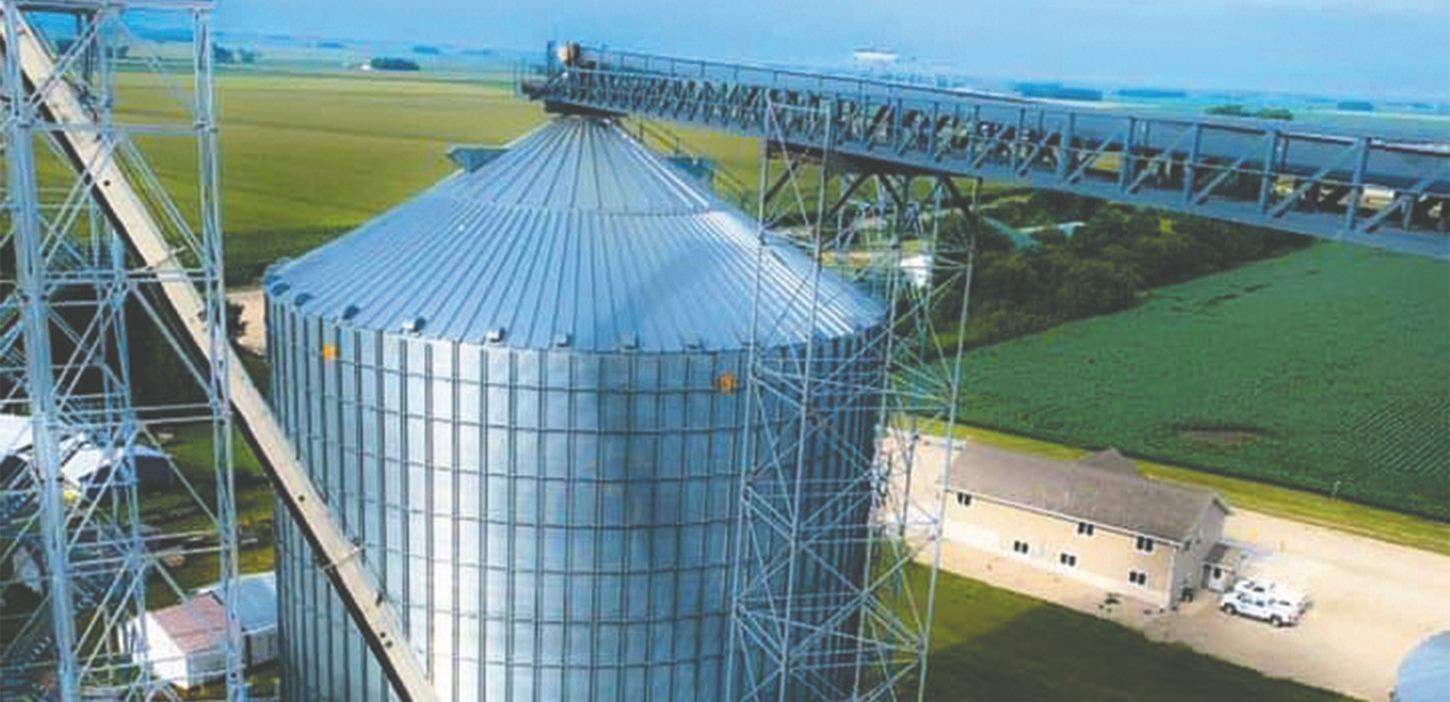

West Central Tribune – March 2024 – 31 L & M Grain Construction, LLC Farm & Commercial Millwright Construction & Repair Contact us for a quote today! 320-894-9354 lmgrainconstruction@gmail.com
Michael Johnson / Agweek Roy Bell has a cow/calf operation near Leader, Minnesota. He’s been working through the possibility of a local cooperative to offer beef, including culled cows, direct to local markets.
One of those local producers in attendance at an informational meeting Thursday, Jan. 18, was Roy Bell of Bell’s Rawhide Ranch near Leader, Minnesota. Bell likes the idea of a cooperative and said he’d like to see this sort of thing happen here in his area where he calves out about 325 head of beef a year. In looking at some of the financial forecasts, he’s not sure that, at the age of 63, he’d enjoy the benefit that a cooperative could provide as it could take years to establish the business and market their beef to its full potential. But he feels it’s a viable choice for a younger producer.
“I think it’s a great idea, and I think it can be feasible. But I only have so much time left,” Bell said. If it takes off, Bell feels it will take volunteer labor to see it through — more work for the producer. He’d like to see the cooperative model work out in his community where pasture-raised beef is the main focus.
“We don’t do any farming,” Bell said of his operation. “We don’t own a piece of tillage equipment.”
He said he’s grazing cattle much like the buffalo would have grazed the area hundreds of years prior.
Chamberlin said they’ve had six or seven of these meetings to discuss a cooperative and 35-40 producers have shown interest.
Chamberlin wants to start small with a test, placing some of their beef in local markets to see how it goes over. If successful, then they have to be ready to roll.
“It’s been encouraging to hear from businesses that

there is a lot of interest in this and that they want to see that product and their customers want to see it,” Chamberlin said of conversations from the last month.
Processing it all
Another part of this puzzle is where they’ll have their beef processed and how much that will add to the cost. In attendance at the most recent gathering was Dave Endicott, special projects coordinator for Minnesota Farmers Union. Dave shared plans that the Farmers Union has purchased acreage in the Staples, Minnesota, industrial park. It’s there that they’ll start to construct a meat processing center to be completed by spring 2025.

Endicott said this includes three modular units, one being a 52-foot “mobile” semi-trailer. That will primarily remain in Staples, but will also travel to Ridgewater College for their training purposes. The Farmers Union mobile unit acts as a kill site, which is not a part of the nearby modular units going in this spring at Central Lakes College, also in Staples.
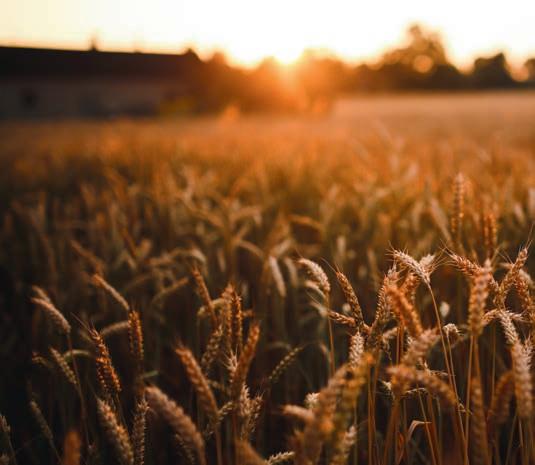







32 – West Central Tribune – March 2024 RealEstate Equipment Livestock Operating DebtRefinancing MATT HUBERT AGRELATIONSHIPMANAGER &ASSISTANTVICEPRESIDENT (320)249-7626 mhubert@heritagebankna.com HeritageBankisproudofits partnershipwithfarmersand ranchersacrossthemidwest! STILL ROOTED IN OUR STILLROOTEDINOUR AGRICULTURAL HERITAGE AGRICULTURALHERITAGE NMLS#446440
Courtesy / Minnesota Farmers Union Dave Endicott is special projects coordinator for the Minnesota Farmers Union.














Friday, April 26th Mark your Calendars 2024 WILLMAR CIVIC CENTER 2707 Arena Dr, Willmar, MN 56201 Admission is FREE! Reserve your space today at sales@wctrib.com or 320-214-4317 8-9:30am Chris Cakes Sponsored by Heritage Bank 9:45am Outstanding Senior Award Sponsored by West Central Sanitation 10-11:am Speaker Mary Holm from Prairie Yard & Garden Sponsored by Pioneer PBS 11:30am Kingery Family on the Main Stage 12:30pm BINGO Sponsored by Thrifty White Drug 2pm Polka Band schedule subject to change PRESENTING SPONSOR
Endicott, who started working for Farmers Union in June, spent the last three years with Central Lakes College working to create the meat processing classes there. He’s worked to both rebuild the workforce of meat processing in rural areas and now provide the infrastructure the region needs to fulfill local meat processing needs.
Endicott said the potential cooperative needs processing options to make their model work.
“Right now there is no USDA facilities in the five-county region around Staples,” Endicott said. Staples is about 42 miles from Pine River. “So it’s filling a gap where they can get that USDA process done.”
He said it all comes down to whether there is more value in marketing their brand of beef over continuing to do business on their own.
The group of producers and contributors agreed that while more homework is needed, there are possibilities that sound worthwhile in making the dream a reality.


34 – West Central Tribune – March 2024
Michael Johnson / Agweek
A group of producers heard from analysts on profit and loss estimates for starting up a meat cooperative on Thursday, Jan. 18, 2024, in Pine River, Minnesota.

ROCKFILTER DISTILLERY USES DRIFTLESS RESOURCES TO ITS ADVANTAGE
 By Noah Fish | Agweek
By Noah Fish | Agweek
SPRING GROVE, Minn. — Kentucky may be the world’s bourbon capital but according to Christian Myrah — founder of RockFilter Distillery — the Driftless region is the perfect place to make it.
The distillery started operations in 2016 and opened its cocktail room a year after. It was started by Myrah, a Spring Grove native who joined the Navy after college and served as a combat fighter pilot for more than 11 years before moving back to his hometown, where he worked on his family’s farm while remaining in the Navy Reserves. He was sent to Afghanistan in 2013.
“They were looking for folks with aviation experience to go run drone units in Afghanistan, so I wound up being in charge of a ScanEagle drone unit in eastern Afghanistan,


West Central Tribune – March 2024 – 35
Noah Fish / Agweek Barrels at RockFilter Distillery in Spring Grove, Minnesota on Jan. 20, 2024.
supporting Green Berets special forces,” Myrah said.
Afterwards, he returned to the farm once again, where they raise certified organic grains and cattle, and had an epiphany.
“Sitting on a tractor one day, I decided this isn’t quite as exciting as what I was just doing, so let’s figure out a way to make this grain a little more exciting,” he said.
Only a handful of people have been involved in the operation which ranges from the farm to distillery. The farming work is done by himself and his father, with the exception of some hired hands during harvest season.
Variety of organic grains
“Everything we make here comes from grain that we grow,” Myrah said. “It all starts in the dirt.”
Myrah said that bourbon has to have at least 51% corn in it by definition, and the distillery uses anywhere from 55 - 70% corn in its bourbon recipes. But their certified organic farm grows a variety of grains that are used at the distillery.
“We have corn, rye, oats, sorghum, triticale — we use oaxacan green heirloom corn and some of these ancient heirloom corn varieties,” Myrah said. “Six to seven different grains, I guess that we’re using across the different recipes that we’re producing right now.”
He said they grow more corn than they need for distilling so they’re able to sell some as a cash crop, but the rest of the grain is planned precisely for distilling.
“For some of the specialty grains, I’ll just grow a few acres, or enough to do what we need for that year, or maybe for two years worth,” he said. “And with farming, the seasonality and the variability of the seasons sometimes affects yields and crops and things like that, too, so there’s some things we can’t plan for.”
The fertile soil which grows the grain for the distillery is certified organic, and has been for the last 20 years.
“We certify our whiskey and bourbon organic,” he said. “It’s not going to prevent hangovers or anything like that, if you drink too much of it, but it’s more about the process, how we treat the land, the soil and everything from start to finish.”
Historic building
RockFilter Distillery is housed inside of an old creamery in downtown Spring Grove. Etched on the outside of the building are two different years — 1909 and 1923.
“The creamery co-op was established in 1909, and then this building was built in 1923,” Myrah said standing inside the large building. “It was originally built to make butter in, and then the production area we’re standing in right now was added on to the original building a number of years later, to make cheese.”
He said after the creamery closed down in the ‘70s, the building was home to a feed store, before it became a Culligan water dealership, and then a fiberglass factory.
“There was a lot of resin and fiberglass on some of



36 – West Central Tribune – March 2024 Haug Implement Co.isa solid, progressive, hometown JohnDeeredealership located in Willmar& Litchfield. We’ve been growing crops, families, customerconnections & co-worker relationships since 1918. Come grow with us! See HAUGIMP.COM for - Equipment, Parts& Service - CurrentJob Openings - Online Applications
these walls,” Myrah said of the state of the building when they moved into it. “There’s been a lot of different things in here over the years.”
The bones of the old creamery work perfectly for what it’s being used for today.
“It’s a good building for our purpose,” Myrah said. “There’s floor drains in every room.”
Driftless edge
Myrah said the Driftless region in southeast Minnesota really lends itself to whiskey and bourbon. He said the geology in southeast Minnesota is similar to what it’s like in Kentucky, the best-known place for bourbon production.
“There’s all these resources here in the Driftless region, everything from the grains to the limestone filter water,” Myrah said.
All the water they use in the distilling process comes from a well they have on the farm, which they have tested frequently for chemicals.
“That water has the mineralization and things that help with our fermentation process,” he said. “Everything that really you need to make whiskey is right here in this in this region, so let’s put all those natural resources together and make a world class whiskey and bourbon right here.”
Right now, the distillery distributes its products throughout Minnesota and is also in North Dakota and
South Dakota, but is looking to distribute throughout Wisconsin and Iowa as well.
Myrah said the distillery produces around 5,000 gallons of whiskey per year.
“Everything we do goes into new charred white oak barrels, and sits and ages for an undetermined amount of time,” he said. “We age it until it’s ready.”




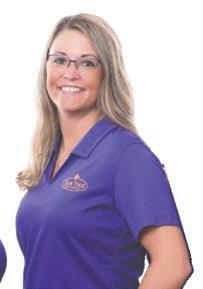

West Central Tribune – March 2024 – 37 320-796-1000 JANE VIKSE BROKER®/OWNER 320.979.0632 JASMINE VIKSE REALTOR® 320.894.3862 JALANNY RUPP BROKER/AGENT 320.894.4512 JENNA VIKSE REALTOR® 941.400.6343 Nuturing your real estate dreams. It’s what we do.
Noah Fish / Agweek Christian Myrah, founder of RockFilter Distillery in Spring Grove, Minnesota on Jan. 20, 2024.




DO YOU FEEL LOST IN THE WORLD OF ADVERTISING?
It’s normal.
Everyone has their job – and advertising is ours.
Our consultants have all the tools they need to navigate the maze of possibilities. Let them help you reach your target audience!
Your products and services need to be seen.
Whether online or in print, trust your local newspaper to create ads that get straight to the point!

sales@wctrib.com • www.wctrib.com






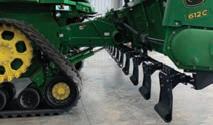



















GETREADYFORHARVEST WITHMAYWES POLY Scan the codeto watch theBig Swede’sreview! CORNHEADPRODUCTS G4 Stalk Stompers Featured byMillennial Farmer &L ar sonFarms Trash Aprons RowDivider Shields Snout Savers Auger Trough Liners GVLPolySnouts GRAINHEADPRODUCTS Cu tterbarSkid Shoes For Case IH,NewHolland and MacD on Auger Liners Retrac table Poly Fingers Skid Shoes 5-Finger QuickTines &Snap-On Tines Crop Dividers NEW! Scanthe code to watch ourinstallation video with FastAg Montana! Soldindividuallyorinpacks of 10. Reuses OEMhardware. Requesta FREE catalog! PROUDLYMADEINHUTCHINSON,MN www.maywes.com320-587-2322




























 By Levi Jones | West Central Tribune
By Levi Jones | West Central Tribune













































































































































































